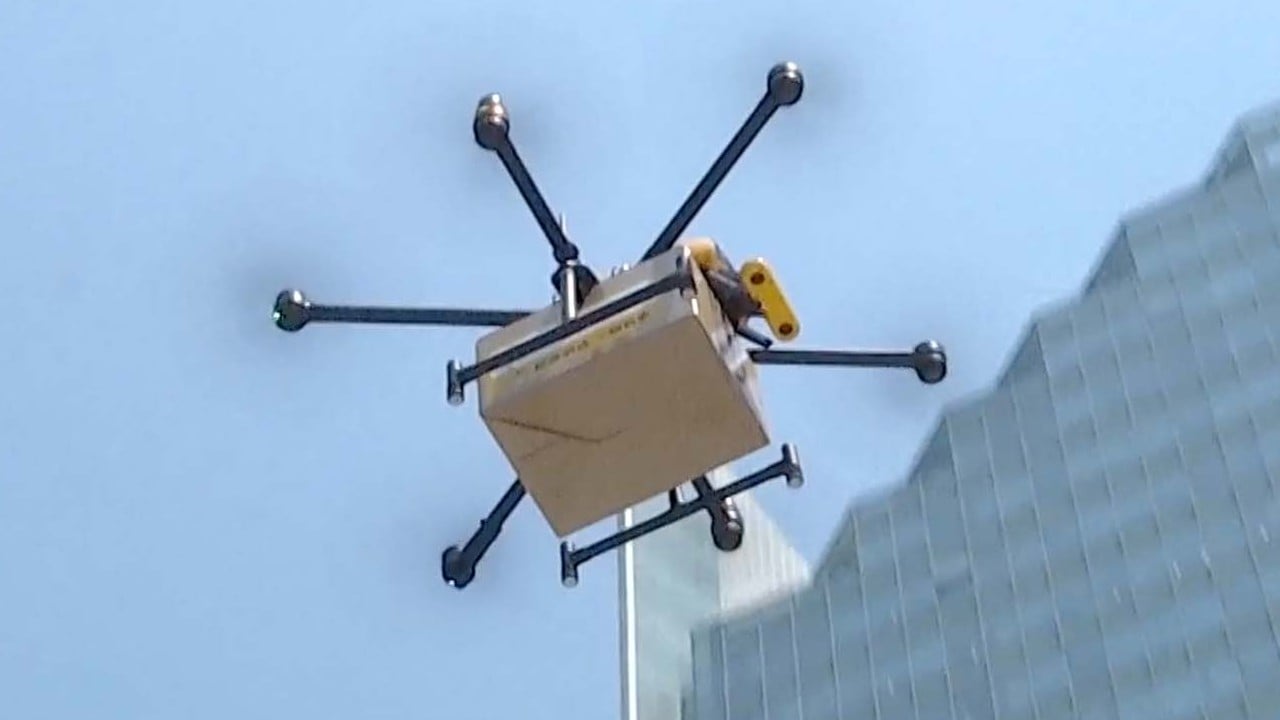The EH216-S model aircraft, which is designed and manufactured by EHang, has reportedly completed over 42,000 successful flights, and has a top speed of 130km/h (81mph).
“[The demonstration] not only sets a significant benchmark for the airworthiness certification of innovative eVTOLs in China and globally, but it also marks a groundbreaking milestone in the commencement of commercial operations for urban air transportation,” added Li.
The flight route is preset, and once the destination has been selected and the take-off command is executed, the aircraft autonomously follows the predetermined route.
In recent years, bolstered by a suite of supportive policies, China’s low-altitude economy has witnessed rapid growth and a sustained increase in aircraft and enterprises.
Ready for launch: China’s low-altitude economy could add US$700 billion by 2025
Ready for launch: China’s low-altitude economy could add US$700 billion by 2025
Low-altitude economy refers to a comprehensive realm of industries centred around civil-manned and unmanned aerial vehicles, including manufacturing, low-altitude flight operations and integrated services.
Industry insiders said it has vast potential for future prospects, and could become a trillion-dollar industry significantly sooner than the autonomous vehicle sector.
This year, 16 provinces included low-altitude economy, general aviation and other related concepts in their government work reports.
On Thursday, Guangzhou also released a set of measures and detailed policies to promote the high-quality development of the low-altitude economy, including a subsidy of up to 30 million yuan (US$4.2 million) for eligible low-altitude industry projects, in an effort to forge a multibillion-dollar industry cluster.
To boost the development of the low-altitude economy industry, Guangzhou will also launch the first unmanned aerial tourist sightseeing route, with more than 10 stations set up across three routes.
Neighbouring Shenzhen has also rolled out supportive measures, including advantageous policies intended to attract businesses and subsidies, as well as incentives to innovate and expand businesses.
Low-altitude flight activities could include passenger transport, cargo delivery and other operational tasks.
Commercial passenger drones have the potential to save time during morning and evening rush hours in cities as it allows for flying in a straight line, avoiding pedestrians and traffic lights.
The associated infrastructure costs are relatively lower, and it can even make direct use of the rooftop spaces in urban areas
“A journey that might take one hour on the ground due to road restrictions and traffic congestion, could be completed in just 10 minutes in the air,” Li added
“Moreover, the vertical take-off and landing means there’s no need for a runway, and its smaller size than helicopters results in significantly reduced noise.
“Therefore, the associated infrastructure costs are relatively lower, and it can even make direct use of the rooftop spaces in urban areas.”
In addition to aerial sightseeing and passenger transport, the drones could also be used for aerial logistics, emergency medical rescue, as well as firefighting.


